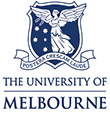Lung virome convergence precedes hospital-acquired pneumonia in intubated critically ill patients
Authors:
- Anani, Hussein
- Destras, Grégory
- Bulteau, Simon
- Castain, Louise
- Semanas, Quentin
- Burfin, Gwendolyne
- Petrier, Mélanie
- Martin, Florian P.
- Poulain, Cecile
- Dickson, Robert P.
- Bressollette-Bodin, Céline
- Roquilly, Antoine
- Josset, Laurence
Details:
Cell Reports Medicine, Volume 6, Issue 9, 2025-09-16
Article Link: Click here
Hospital-acquired pneumonia (HAP) is one of the most common nosocomial infections, leading to significant morbidity and mortality in critically ill patients. HAP is previously associated with dysbiosis of the microbiota. However, the composition of the lung virome and its role in HAP pathogenesis remain unclear. Here, we longitudinally analyze the endotracheal virome in 87 critically ill patients, including 48 with HAP. Within the virome dominated by Caudoviricetes, a decrease in viral beta-diversity toward a bacteriophage-dominated signature and a distinct viral-bacterial interactome is observed 5–4 days before HAP onset. Lung virome composition, viral convergence before HAP onset, and conservation of 18% of the bacteriophage signature are validated in an external cohort of 40 patients. In silico causal inference further identifies bacteriophages associated with Streptococcus and Prevotella as a key regulator of HAP onset. These findings suggest an uncovered pathophysiological mechanism of HAP with virome involvement in lung microbiota dysbiosis. The discovery and validation studies are registered at ClinicalTrials.gov (NCT02003196 and NCT04793568).


